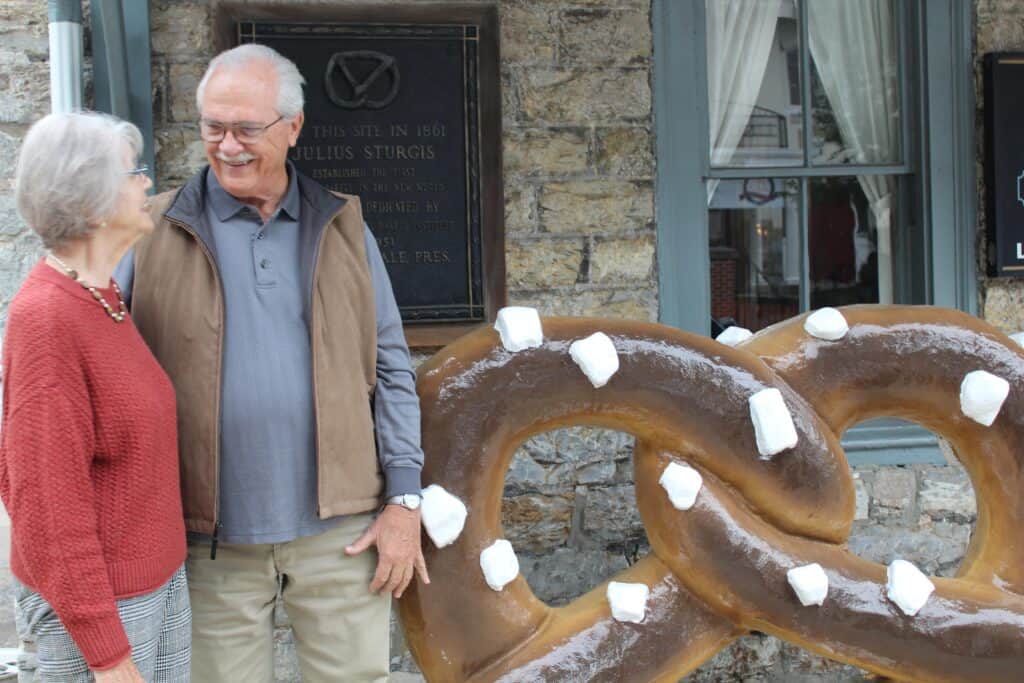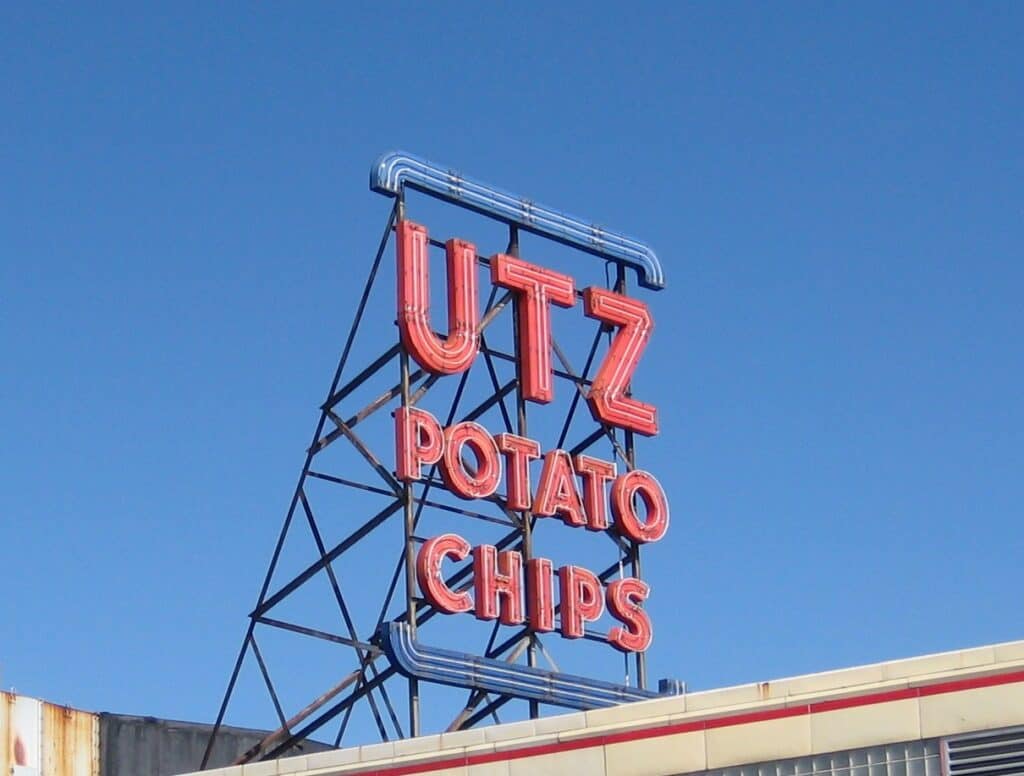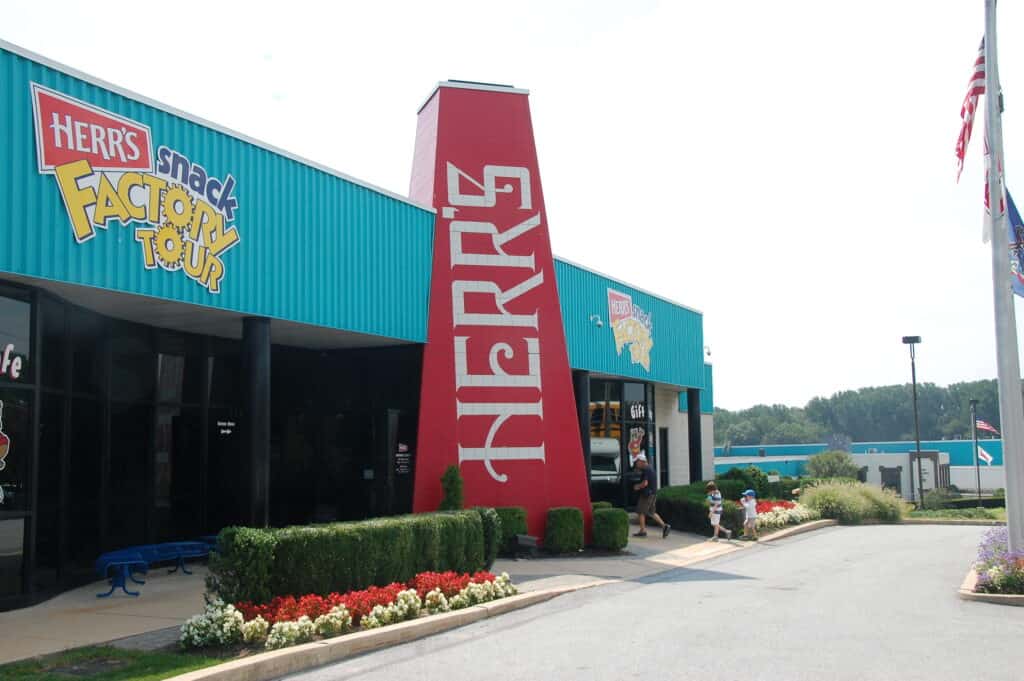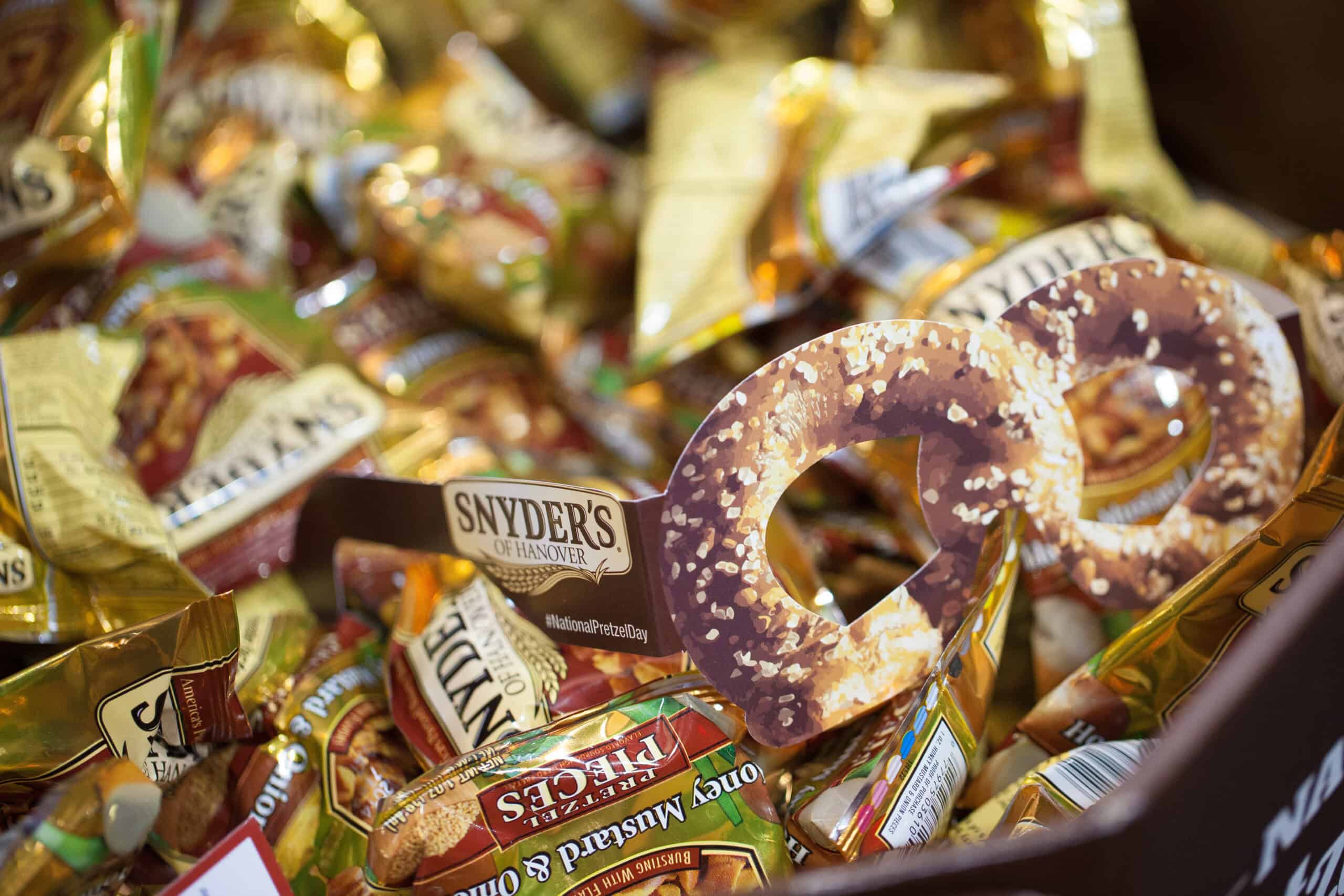Here’s why Hanover is the ‘snack food capital of the world’
The small York County town of Hanover is a big name in salty snacks, including pretzels, cheese curls, and potato chips.
Stop at any gas station in south-central Pennsylvania, and you’ll see the usual rows of salty snacks lining the shelves. But take a closer look at the labels and you might discover what locals already know: many of the country’s favorite chips and pretzels come from the small borough of Hanover, also known as the “snack food capital of the world.”
This York County town, with a population of just over 16,000, is home to some of the biggest names in snacks, like Utz Brands (founded 1921) and Snyder’s of Hanover (founded 1909). The surrounding region—stretching across Pennsylvania Dutch Country—is also home to popular, more regional snack brands such as Martin’s Potato Chips and Middleswarth Potato Chips. Thanks to its Pennsylvania Dutch heritage and proximity to major urban centers, Hanover sits at the heart of what is often called the “Pennsylvania Snack Belt.”
To understand why Hanover became the epicenter of American munching, we have to go back hundreds of years to when the Pennsylvania Dutch—descendants of German and Austrian immigrants, not the Dutch—established a tight-knit, industrious community in the commonwealth. Then, we follow their legacy to today, where pretzel and potato chip factories are still churning out snacks for Americans across the country.

Pennsylvania loves its pretzels
We begin, as is always best, with pretzels. The skill of making these twisted treats crossed the Atlantic with Pennsylvania Dutch settlers in the 18th century, and soft, salty pretzels quickly became household staples. According to food historian William Woys Weaver, Pennsylvania Dutch food is unique in how it is “inspired by the Old World but reinvented as something uniquely American,” as he told HuffPost in 2016.
It was in 1861 that the Julius Sturgis Pretzel Bakery in Lancaster County’s Lititz—still operating today—became the country’s first commercial pretzel bakery. It was founded to sell a recent innovation: the hard pretzel. Unlike soft pretzels, hard pretzels could be stored longer, transported farther, and, according to this author’s research, more easily shoved into mouths.
The Pennsylvania pretzel revolution took off from there. Today, a reported 80% of all the pretzels produced in the United States are made by dozens of pretzel companies right here in the commonwealth.
But Pennsylvania snack foods don’t stop at pretzels—there are cheese curls, corn puffs, and of course, the all-mighty potato chip.

Farm-to-couch food
Like the Julius Sturgis Pretzel Bakery, family businesses crafting home-baked snacks cropped up to sell their goods to the region. Farms in Pennsylvania Dutch country have long produced the ingredients for popular snack foods, whether we’re talking wheat, potatoes, or corn. (Lard, too, is found in many an eastern Pennsylvania chip.)
Take the humble potato, for example—specifically the chipping potato, which turns into the kind of thin and crispy snack you can find in every Hanover grocery store. The ideal chipping potato has “low moisture content, [is] round in shape, bruise-resistant, and [has] low sugar content.” Pennsylvania’s slightly acidic soil and humid climate helps it claim one of the top spots in production of chipping potatoes in the United States—though the hotter temperatures associated with climate change may be threatening the state’s potato crop.
Still, Pennsylvania agriculture—a heavyweight industry responsible for $84 billion in direct economic output in the state—shines in central and southeastern Pennsylvania, where the humid environment, plus the central region’s valleys of limestone-derived soils, forms ideal growing conditions for many crops like corn and wheat.
Today, snack food isn’t merely what the folks of south-central and southeastern Pennsylvania grab for the big game or stuff into their bags on their way to the movie theater—it’s part of the region’s identity, and local loyalty runs deep.
“People in the rest of the U.S.—they have the Wise and the Lays—but they’ve never had a good chip,” an Adamstown grocery store manager told the Pennsylvania Center for the Book.

Experiencing the snack legacy today
For fans of salty snacks, the Pennsylvania Dutch Country region isn’t merely a manufacturing hub—it’s a travel destination, whether you’re focused on hitting as many mom-and-pop grocers as possible to find Bickel’s Snack Foods when you can’t find them anywhere else, learning about how the snack industry has impacted Hanover, or seeing how snacks are made behind the scenes.
Hanover’s annual Snack Town Street Fair, held in July with support from Utz Brands, is a fun-filled community day with live music, entertainment, and plenty of potato chips. In September, Snack Town Fall Fest celebrates the town’s snack food heritage with music, family activities, and area brews.
And while the snack aisle will give a great and overwhelming (in a good and tasty way) overview of the snack brands that call central and southeastern Pennsylvania home, you can also explore the Snack Belt’s food legacy with tours and factory visits. Though Utz Foods and Snyder’s of Hanover have ended their popular factory tours, and Martin’s tours are “currently cancelled” (perhaps that will change in the future), you can still get a taste of chip and pretzel making at other informative and fun tours in the region—one for pretzels and one for chips.
Julius Sturgis Pretzel Bakery in Lancaster County’s Lititz offers tours of the original pretzel factory, complete with a pretzel-twisting lesson. You can schedule your interactive tour online.
In Chester County, Herr’s Snack Factory Tour in Nottingham is a family favorite, where you can learn about the history of the Herr’s snack food empire and how the family-owned company makes its snacks today.
But even if you’re far from Hanover and the Snack Belt, you can taste the town’s impact on American snack culture with a simple trip to the grocery store—or perhaps just your pantry cabinet.




